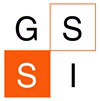How to use correlation function to unveil the behavior of collective biological system
Andrea Cavagna
Institute for Complex Systems National Research Council, Rome
Collective behavior in biological systems is a complex topic, to say the least. It runs wildly across scales in both space and time, involving taxonomically vastly different organisms, from bacteria and cell clusters, to insect swarms and up to vertebrate groups. It entails concepts as diverse as coordination, emergence, interaction, information, cooperation, decision-making, and synchronization. Amid this jumble, however, we cannot help noting many similarities between collective behavior in biological systems and collective behavior in statistical physics, even though none of these organisms remotely looks like an Ising spin. Such similarities, though somewhat qualitative, are startling, and regard mostly the emergence of global dynamical patterns qualitatively different from individual behavior, and the development of system-level order from local interactions. It is therefore tempting to describe collective behavior in biology within the conceptual framework of statistical physics, in the hope to extend to this new fascinating field at least part of the great predictive power of theoretical physics. In this brief lectures I will illustrate how the conceptual cornerstone of this ambitious program is that of correlation. To illustrate this idea, I will address the case of collective behavior in bird flocks. Two key threads emerge, as two sides of one single story: the presence of scale-free correlations and the dynamical mechanism of information transfer. I will discuss first static correlations in starling flocks, in particular the experimental finding of their scale-free nature, the formulation of models that account for this fact using maximum entropy, and the relation of scale-free correlations to information transfer. This will be followed by a dynamic treatment of information propagation (propagation of turns across a flock), starting with a discussion of experimental results and following with possible theoretical explanations of those, which require the addition of behavioral inertia to existing theories of flocking.
Dynamical density functional theory of active matter
Hartmund Löwen
Heinrich-Heine-Universität Düsseldorf
The collective behavior of active particles represents a fascinating part of nonequilibrium many-body physics with a wealth of phenomena like swarming, motility-induced phase separation and active turbulence [1]. In this lecture an ab initio theory based on the individual active particles (or microswimmers) is proposed which is based on the dynamical density functional theory (DDFT) of classical Brownian particles [2]. As an important and nontrivial extension, hydrodynamic interactions between the particles mediated by fluid flow are incorporated such that pushers, pullers and neutral swimmers can be discriminated in the DDFT description [3]. As an example, the theory predicts a hydrodynamic pumping state in confined active suspensions both for linear swimmers and circle swimmers [4] which will be proposed and discussed and put into relation with recent experiments. The lecture has three parts: first, it will start with the basics of density functional theory (DFT). Then the dynamical extension (DDFT) for passive Brownian particles will be described. Finally the DDFT theory will be applied to active matter.
References:
[1] C. Bechinger, R. di Leonardo, H. Lowen, C. Reichhardt, G. Volpe, G.
Volpe. Active particles in complex and crowded environments, Reviews of Modern Physics 88, 045006 (2016).
[2] H. Lowen. Dynamical density functional theory for Brownian dynamics of colloidal
particles, chapter in the book "Variational Methods in Molecular Modeling", edited by J. Wu, Springer, 2017, pages 255-285.
[3] A. M. Menzel, A. Saha, C. Hoell, H. Lowen. Dynamical density functional theory for microswimmers. Journal of Chemical Physics 144, 024115 (2016).
[4] C. Hoell, H. Lowen, A. M. Menzel. Dynamical density functional theory for circle swimmers, New Journal of Physics 19, 125004 (2017).

